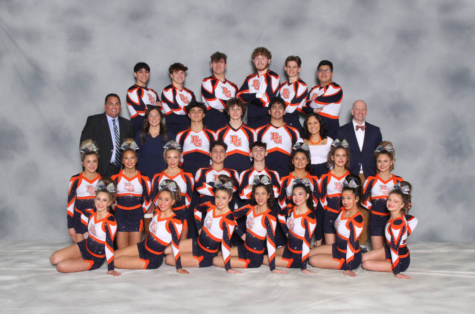Mirror of the Mind: The security of social trends
In the eighties, high schoolers’ interests included perms and slapstick comedy-filled movies. When the nineties came around, the big hair and funny movies were replaced with butterfly clips and basic video games. Now, instead of wearing eccentric hairdos and playing Donkey Kong, teenagers tend to gravitate towards conspiracy theories and memes. While each of these fashions, objects and ideas are very different, they all have one thing in common: they are all social trends.
In almost every advanced society, social trends exist in some form. While relatively recent technologies such as the television and social media facilitate the spread of these social trends, they have existed long before the creation of advanced technology. According to a 1997 encyclopedia article entitled “1600-1754: Lifestyles, Social Trends and Fashion,” even early settlers in America followed social trends relating to clothing and housing.
Trends typically form as a combined result of the need to fit in and the need to simplify society. According to a 2017 Psychology Today article entitled “Why People Follow the Crowd,” societies advance when we are able to do more activities without thinking about them. To a certain degree, social trends eliminate unnecessary thought when choosing which clothes to wear, which music to listen to and which objects to buy.
While this reasoning accounts for the existence of trends, it doesn’t account for the rise of specific trends. A few modern ones are appealing for reasons other than the need to fit in and simplify society.
For example, with the rise of YouTubers like Shane Dawson, conspiracy theories have recently skyrocketed in popularity. In addition to other YouTubers and internet personalities taking an interest in the topic, high schoolers have begun integrating these theories into everyday conversation. According to a 2018 Psychology Today article titled “Why Do People Believe In Conspiracy Theories?”, while conspiracy theories somewhat work towards the goal of simplifying society, we mostly enjoy them because they provide us with a sense of understanding, security and control. Conspiracy theories explain the unexplainable, which can be relieving to hear, particularly among distrustful individuals. That being said, some individuals may enjoy them merely because they’re fun to talk about.
Memes are another modern example of a trend that exists for reasons other than the need to fit in and simplify society. According to a 2017 Bustle article, we like memes because “they make us feel part of an elite community, and give us the boost of understanding something slightly odd and non-obvious.” In order to understand memes, individuals need a basic understanding of pop culture. When viewing memes, individuals’ brains make connections between other pop culture references and trends, causing them to feel like, as Bustle phrased it, “part of an elite community.” This sense of “eliteness” and understanding can boost self-esteem, causing individuals to want to view more memes and posts. The increasing prevalence of memes may reflect the increasing prevalence of technology; as the internet allows us to create and share more content, social trends may become less materialistic and more technological.
Current trends will inevitably continue to be replaced with new ones. While it’s impossible to predict what they will be, we can easily predict that the existence of trends is not a trend; it won’t be fading away anytime soon.









